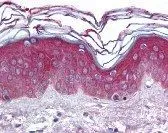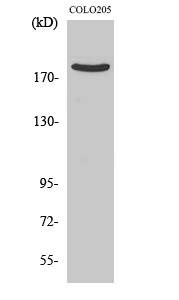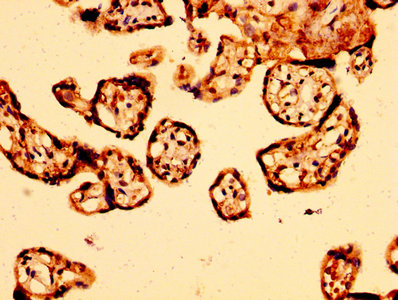
IHC-P analysis of human skin tissue using GTX16242 ARHGEF11 antibody.
ARHGEF11 antibody
GTX16242
ApplicationsWestern Blot, ImmunoHistoChemistry, ImmunoHistoChemistry Paraffin
Product group Antibodies
TargetARHGEF11
Overview
- SupplierGeneTex
- Product NameARHGEF11 antibody
- Delivery Days Customer9
- Application Supplier NoteWB: 5 microg/mL. IHC-P: 5 microg/mL. *Optimal dilutions/concentrations should be determined by the researcher.Not tested in other applications.
- ApplicationsWestern Blot, ImmunoHistoChemistry, ImmunoHistoChemistry Paraffin
- CertificationResearch Use Only
- ClonalityPolyclonal
- ConjugateUnconjugated
- Gene ID9826
- Target nameARHGEF11
- Target descriptionRho guanine nucleotide exchange factor 11
- Target synonymsGTRAP48, PDZ-RHOGEF, rho guanine nucleotide exchange factor 11, Rho guanine exchange factor (GEF) 11, Rho guanine nucleotide exchange factor (GEF) 11, RhoA-specific guanine nucleotide exchange factor, RhoGEF glutamate transport modulator, glutamate transporter EAAT4-associated protein 48
- HostRabbit
- IsotypeIgG
- Protein IDO15085
- Protein NameRho guanine nucleotide exchange factor 11
- Scientific DescriptionRho GTPases play a fundamental role in numerous cellular processes that are initiated by extracellular stimuli that work through G protein coupled receptors. The encoded protein may form a complex with G proteins and stimulate Rho-dependent signals. A similar protein in rat interacts with glutamate transporter EAAT4 and modulates its glutamate transport activity. Expression of the rat protein induces the reorganization of the actin cytoskeleton and its overexpression induces the formation of membrane ruffling and filopodia. Two alternative transcripts encoding different isoforms have been described. [provided by RefSeq, Jul 2008]
- Storage Instruction-20°C or -80°C,2°C to 8°C
- UNSPSC12352203






